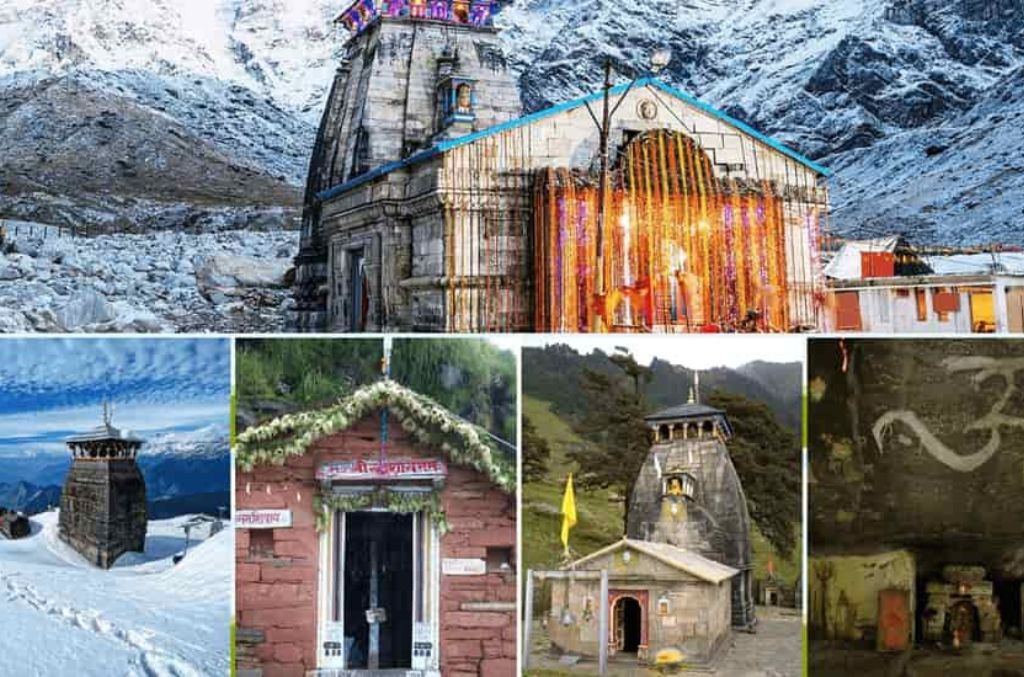PANCH KEDAR Yatra (12N/13D)
Uttarakhand (10 Rating ) ₹49,999 Gutsy Adventure Couples/Group Adventure, Solo Adventure 24 hrs confirmation Expert Instructor Camp MealsOverview
The Panch Kedar Trek is a sacred pilgrimage journey in the Indian state of Uttarakhand, encompassing five ancient temples dedicated to Lord Shiva. Spanning around 170 kilometers, this spiritual odyssey takes devotees through breathtaking Himalayan landscapes, dense forests, and charming mountain villages. The trek includes visits to the revered Kedarnath, Tungnath, Rudranath, Madhyamaheshwar, and Kalpeshwar temples, each nestled amidst serene surroundings. Pilgrims experience a profound sense of devotion and connection as they pay homage to Lord Shiva at these sacred sites, steeped in mythological lore and spiritual significance. The Panch Kedar Trek is not only a physical journey but also a deeply spiritual and transformative experience for those seeking solace and enlightenment in the embrace of the Himalayas.
Highlights
- Sacred pilgrimage: Visiting five ancient temples dedicated to Lord Shiva.
- Himalayan vistas: Spectacular views of snow-capped peaks and lush valleys.
- Spiritual immersion: Deepen devotion amidst serene mountain landscapes and temples.
- Mythological significance: Sites steeped in ancient legends and divine lore.
- Cultural exploration: Engage with local traditions in charming mountain villages.
- Personal transformation: Seek solace and enlightenment on this transformative journey.
Itinerary
- We embark on this surreal trekking journey intending to capture the most astounding confluences along the road to Karanprayag. The deep and serene waters of River Ganga accompany us till Dev Prayag. A short picture-break at this holy confluence of Alaknanda and Bhagirathi would already blow your mind. It is the last of the five holy Prayags. The confluence is believed to be godly and thus is the name. The pious place has served as the meditation haven for Shri Rama and also King Dasharatha. The spot is now known as Raghunatha Temple that dates back to Treta Yug. A myriad of Hindus flock at Baitalshila, a natural spring at Devprayag. The main reason being the magical powers of the water to cure skin diseases. Further along, this topsy turvy drive takes us to Rudra Prayag, the Confluence of River Mandakini and Alaknanda. We shall explore this riveting confluence on the last day of our Panch Kedar Trek. Meanwhile, a theatrical story awaits you at Karnaprayag. The most tragic character of Mahabharat, Karna, is believed to have worshipped Sun God at this confluence. After being killed by Arjuna in the battle, Lord Krishna cremated Karna at the very site where he meditated at this confluence. You may even explore the one and only Karna Temple of India perched on a huge boulder at Karanprayag. Besides this, the Uma Devi Temple with its Swayambhu Idol of Devi Parvati is an iconic attraction too. While the mythology fuels your ecstasy, the sublime sight of the rivers soaked in varied hues of waters make you go wow. Our night stay would be at Karnaprayag.
- We shall commence the journey after breakfast. Around 2.5 hours of scenic drive via Nandprayag and Gopeshwar brings you to the most beautiful Urgam valley. River Kalpganga and the terraced fields of apple, rajma and potatoes feel like an entirely different world. If you are visiting in mid-summer, the pleasant sight of swaying fields of flowers awaits you. A short hike with the views to marvel you is what you can expect on this beautiful day. Kalpeshwar, the first temple on our Panch Kedar Trek, is ringed by lofty mountains. It acts as an amphitheatre to gaze at the peak like Nanda Devi, the highest peak of the state. Additionally, the view of Mt. Trishul and Nanda Ghunti is also a delight to soul. However, the spiritual vibes of the valley are derived from the ancient legends. The folklore claims it to be the favourites of the sages like Arghya and Durvasa who meditated here. The main attraction, the stone structure of Kalpeshwar Temple, is quite an ancient construction. It can be reached through a narrow cavernlike path. As per the Panch Kedar legend, the tresses or ‘jata’ of Lord shiva appeared at Kalpeshwar. This fetches it an alternate name of Jateshwar Mahadev. Around 150 meters beyond the temple is another divine spot of Dhyan Badri. It doesn’t fall on Panchbadri list, nonetheless it is a different experience to visit. Our Panch Kedar trek is planned to let you experience each of the Panchkedars at your pace. Take the advantage of this and relish the views. Optionally, you can prefer to be teleported back in time while listening to the folklores.
- Start your day by quickly basking in the warm sunrays while eating a palatable local breakfast. This is to energise you for the 12 km long trekking trail from Urgam to Dumak. This remote village is surrounded by refreshing waterfalls fed by mountain springs. It is an absolute delight to stay at this village oozing rustic charm. The trail is easy to moderate with short stretches of gentle ascents. You may take a fancy in chasing the wild butterflies and moths encountered on the way. Your fanciful trek amidst forest might be interrupted by rustling of leaves and cackling calls of langurs. The dance of the sun with the shadows makes this day’s trek all the more dramatic. This easy trail is your chance to experience the colourful flora of Garhwal Himalayas.
- This day starts with a scrumptious breakfast followed by a meditative trek amidst forest. Every step feels like a step closer to the almighty. Today’s trek is all about vertical climb, rocky patches and being close to nature. The trail is absolutely breath-taking. You must warm-up yourself with basic exercise before starting the trek to avoid feeling it as ‘breath- taking’ in literal sense.Take enough water breaks to keep yourself hydrated. This is essential as it is the first day of actual trekking. Also, be alert for the calls of birds around. You may spot Himalayan Monal, Black Drongos or Green Bee Eaters. The trail passes completely through a desolate forest route. Spotting of snakes, wild moths and owls is going to be a thrilling experience.Pannar Bugyal, as the name clarifies, is an open meadow from where you can see a clear view of Mt.Trishul, Nanda Devi, Nanda Ghunti and Bandarpoochh cliff. The sunset paints the peaks in hues of pink and saffron. Needless to say, it is an awe-inspiring experience for every trekker.
- Start after a breakfast with the refreshing views. Today’s trail is a mix of ascents and descents. The morning starts with an ascent to reach the ridge. from here the view of the lush green Panar Bugyal can literally leave you speechless. All the major peaks encircling the valley would be visible on and off. During Spring and Monsoon, the ridge welcomes you with vibrant wild flowers and shrubs on both the sides.The first important spot to cross is Pitradhaar. It is believed to be the point from where our ancestors’ souls have transcended to the other world. Further on the same trail falls Panch Ganga. This is the highest point of the ascent today. This windy spot is decked up with prayer flags and bells. You may rest here for a moment to take a picture or two. The total trekking duration till Panch Ganga is around 3.5 hours. The trail turns moderately easy as you may quickly dart down the valley from here. After a few stretches of ascents and descents, the Shrine of Rudranath is visible. This auspicious site is made more divine by the glistening peaks of Nanda Devi and Kamet. There is small stream called ‘Vaitarini’ near the temple which claims to have the ‘Water of Salvation’. The temple premise has a lot to explore for nature lovers. You must not miss ‘Suraj Kund’, ‘Tara Kund’ and ‘Chandra Kund’. Attend the evening pooja and spend the night under the sky crammed with stars.
- Trekking route for today is the same till Panchganga. From this spot onwards, the trail goes down towards Naola Pass. During and post-monsoon, Naola Pass is literally a treat to eyes. With its lush green craggy ridge and views to mesmerize, Naola Pass is trekkers’ favourite spot. Not many pilgrims take this route and thus, the path remains exclusive for trekkers.Anusuya Devi Temple is a small unattended shrine. She was the wife of Rishi Atri. According to one of the mythological events, Brahma, Vishnu and Mahesh visited Devi Anusuya to test her devotion. They came at the same spot in the form of three Brahmins. Her chastity and immense devotion made the three Gods transform themselves into infants. The same infants, Durvasa, Soma and Datatreya are now revered as saints in Devbhoomi Uttarakhand. Hence, the birthplace of these renowned souls makes Anusuya Devi shrine, an important place of worship for the locals. If time permits, you may take a diversion to explore Atri Rishi Cave. After this charismatic hike on a desolate trail, we shall head straight down to Mandal. From here, Chopta is just 1.5-hours-long scenic drive.
- t is a relatively moderate 2 KM climb to Tungnath, the highest Shiva Temple at 3470 metres. It is one of the Panchkedars where the ‘bahu’ or the limbs of the bull appeared. The temple is said to have been built in ancient times by the Pandavas. The black-stone temple structure is located just 2-kilometre below the mighty Chandrashila Peak. The views from here are as exhilarating as the divine legend of Panchkedar. Chopta- Tungnath trek claims to have the shortest approach path from Chopta Road. The cemented steps with 11 scissor cuts unravel the sight that would leave you speechless. Along the climb too, widening valley and the peaks greet at every clearing. The view of the Garhwal Valley clad in varied hues of Rhododendron flowers during the month of March and April is mesmerizing. The Tungnath range is rich in flora and fauna paving way to the establishment of the Botanical Station here. Chopta-Tungnath range also has a decent population of the birds like Golden Eagle, Himalayan Monal, Bearded Vultures, woodpeckers, Upland Buzzard, Ashy Wood-pigeons, and European Goldfinch. Among the animals, the main trail is famous for trekkers being accompanied by Bhutia Dogs all the way up to the peak. If your luck supports, you may encounter spotted deer and musk deer too. The summit for Chandrashila is just 1 hour or 2 kilometres of a mildly strenuous climb from Tungnath. It is in literal sense an amphitheatre to admire the mountains and valleys. From Chandrashila Summit you can see the snow-capped peaks like Mt. Nanda Devi, Trishul, Nanda Ghunti, Kamet, Bandarpoochh, Neelkanth, Chaukhambha and Kedar Dome. Feel the divinity at the very location where Lord Ram and even the ardent devotee Ravana had once meditated to invoke Lord Shiva. Once you have had enough of this surreal sight, we shall trace back the same path to reach Chopta.
- Deoriatal, at an altitude of 2438 metres, is a long trek of about 12-13 kilometres with descending trail from Chopta. The trail slides through terraced fields, blooming rhododendron flowers and dense patches of Banj Oaks. You can hear and may spot the birds and animals of Chopta-Tungnath Trek range on this trail as well. Deoriatal is a pristine location encompassed by soaring mountains. Mt. Neelkanth, Chaukhambha, Bandarpoochh, and Kalanag overlook this divine lake. Once upon a time, it was the bathing pond for Gods and Rishis. It has an alternate name of ‘Indra Sarovar’. You must take a stroll around this lake where the mysterious Yaksha appeared to ask questions to Yudhishthira during their exile period. You may take an opportunity to just sit and feel the serenity punctuated by the calls of birds. The beauty of this lake is impeccable in winters as well. After this rejuvenating experience at Deoriatal, you would hike for 3-km to reach Sari Village. Relax and prepare for the challenging trek of Day 9.
- Alternatively if we want to make the day easier, we can drive to Sari from Chopta which will take less than an hour and proceed to trek to Deoria Tal in another hour and a half. On the consecutive day we descend back to Sari and continue our journey ahead to Madhyamaheshwar.
- An hour-long drive from Sari through tiny hamlets and cultivated fields takes you to Ransi. This is our base for the 16-Kilometre-trek to Madhyamaheshwar. The trail has varied transition from dense forest trails, swaying farms, Garhwali villages to finally the open meadows of Madhyamaheshwar. A plethora of birds including the endangered species of Himalayan Monal can be spotted on this trail. Musk deer are a common sighting too, thanks to the breeding centre located in the vicinity. The first of the tiny hamlets on the way to Madhyamaheshwar is Gaundhar. After 2 kilometres from here lies the Madhyamaheshwar Ganga or Madhu Ganga. It is a holy confluence of Saraswati Ganga and Morkhanda Ganga. After some similar chattis or tiny villages like Gaundhar, you finally reach an open meadow of Madhmaheshwar temple. The sturdily standing Chaukhambha seem to be saluting Lord Madhmaheshwar. The name signifies the middle-part or the ‘navel’ and ‘stomach’ that manifested at this place. A navel- shaped lingam is worshipped at the main shrine. The temples of Devi Saraswati and Ardhnarishwar are among the other shrines in this complex. The older temple is located at a little distance from the current shrine. It is known as Vridh-Madhmaheshwar. Nonetheless, the sublime beauty awaits you after a steep climb above this temple. The little shrine at the bank of the pond is famous as Bura-Madhyamaheshwar. It showcases the sublime vistas consisting of the peaks of Chaukhambha, Trishul, Neelkanth, Panchuli and Kamet. The flabbergasting drama shall not be missed at sunset which is as magical as the vibes here. We shall spend the night amidst the craggy mountains on the gentle meadows of Madhmaheshwar.
- After a tranquil night spent at Madhyamaheshwar, now it is the time to pay our prayer to the main Kedarnath shrine. The same route down via chattis that you crossed on your way up takes you back to Ransi. Traversing through the splendid valley created along Mandakini, we shall reach Guptkashi. This is not just a stopover but also a place which holds a great importance in Hindu scriptures. As per Mahabharata, when Pandavas were searching for Lord Shiva, he was hiding at this very location. The name ‘Guptkashi’ is derived from this instance. Lord Shiva is worshipped here as Vishwanatha and the main shrine is dedicated to Him. Right in front of the temple is the Manikarnika Kund. This kund is supposed to be an underground or ‘gupt’ (hidden) confluence of Ganga and Yamuna. The rivers are supposed to be flowing underground till they manifest at this conjunction. Today’s route would be glistened by the fluttering flowers of Magnolia or Champaka. These flowers are the speciality of the valley spread around Mandakini. Even the town Guptkashi has abundance of Champaka flowers. It serves as a decor for almost every home. You may shop or refill your wallet with cash at Guptkashi’s small market.
- Start the long day with a crazy ride to Gaurikund from Guptkashi. The route passes through another holy confluence. Here River Basuki merges with River Mandakini to form the gorgeous Son Prayag. Ice-capped mountain views accompanies you throughout the journey. The motorable road ends at Gaurikund, another town associated with a fanciful legend. Folklore says that Gauri, who later became wife of Shiva, initiated her penance here. She was adamant to win over Shiva’s love. It was at this very place surrounded by hot-water springs that Shiva-Parvati’s love story took a turn. They finally tied the knot at Triyugi(Tirju) Narayan, located not too far from here. The trail is well defined with gravelled path to begin with and later the cemented steps. You would be accompanied by many devotees heading to Kedarnath on ponies. The trail offers splendid views of untouched waterfalls gushing down the valley to meet Mandakini. You will also walk through many of such waterfalls on the trail as well. Look for the dazzling rainbows here if it is a sunny day. River Mandakini flows on your right till the famous Bailey Bridge. This bridge was washed away during 2013 flood and is now reconstructed by BRO. The ascent starts from this point onwards. It continues till the plain plateau where the temple is located. By now, the shabby constructions of lodges surrounding the temple would be visible. Straight walk from here takes you to your destination. The Kedarnath temple, at an altitude of 3584 meter, is located right in the lap of the massive Kedarnath Peak. Enjoy the setting sun creating a scintillating backdrop for the temple. Take the blessings of the lord during the evening aarati and prepare for a cosy slumber.
- Get up early morning and devour the beauty that surrounds you. The awe-inspiring sight of Sumeru, Kedarnath Peak and Kedar Dome is the most divine thing in the Himalayas. Enjoy this most-visited pilgrim of Uttarakhand and get ready for the descent. Post-breakfast, trace down the same path, greeting the birds, shrubs and the gurgling waters of Mandakini. By noon we reach back to the base at Gaurikund and board on the vehicle for the return journey. A motorable road from Gaurikund via Guptkashi takes us back to Rudraprayag. One of the holy Panch Prayags, Rudraprayag, has numerous legends to tell. The name of this Prayag is attributed to the Rudra form of Shiva. He is said to have performed tandav at this Prayag. Another legend attributes the name to Shiva’s act of playing Rudra Veena at this confluence. The story of Naradmuni playing Veena at Rudraprayag is also well-known. You must spend the evening at the confluence to relieve all the tiredness of the trek. Apart from the mythological mentions, Rudraprayag was widely popular among wildlife lovers. The town has now modernised way too much with the ever-expanding construction sites. However, once upon a time, the wild tigers from Kedar and Tungnath Forest range roamed till Rudraprayag. One such man-eating wild tiger mentioned by Jim Corbett resided right here at Rudraprayag.
- Post-breakfast board on the vehicle and reach back to Dehradun/Rishikesh/Haridwar by evening and depart with the fond memories of the Panch Kedar trek etched in your heart.
Inclusion
Transport support from and to Dehradun: starting from pickup on day 1 to drop on day 13.
Guide and cook fees.
Rent for camping equipment.
Forest entry charges.
Porter and mule support to carry camping equipment. Please note that personal luggage can be carried by mules and/or porters on chargeable basis.
All veg meals starting from day 1 lunch to day 13 lunch.
Accommodation throughout the trek. Tented or Guest House, based on location.
Exclusion
Transport to reach Dehradun from hometown.
Personal expenses like tips, personal medicines, phone calls etc.
Any transport support during the trek apart from what is included above.
Accommodation in Dehradun.
Personal luggage with mass not exceeding 12 kg per bag per person can be carried by porters/mules @ Rs 300 per trekking day per bag.
Note
- This trip covers locations based on high altitude and not recommended for people with asthma or other breathing concerns.
- The trek is not recommended for the children below 12 years.
- Keeping your safety first, if the weather is poor, the event may be delayed or postpone, and an alternative time slot will be suggested.
- Please carry an ID proof and passport size photo (PAN card will not be considered as a valid id proof).
- Kindly read all sections in attachment to know more about the trip.
- Kindly pay full attention to the briefing provided and follow all guidelines as recommended.
- Trekking is to immerse oneself in nature, so please expect basic facilities.
- Electricity may be available only at a few locations.
- Package includes vegetarian meals only.
- Vendor details will be shared post booking. Please co-ordinate with vendor on reporting time & location.
Gallery
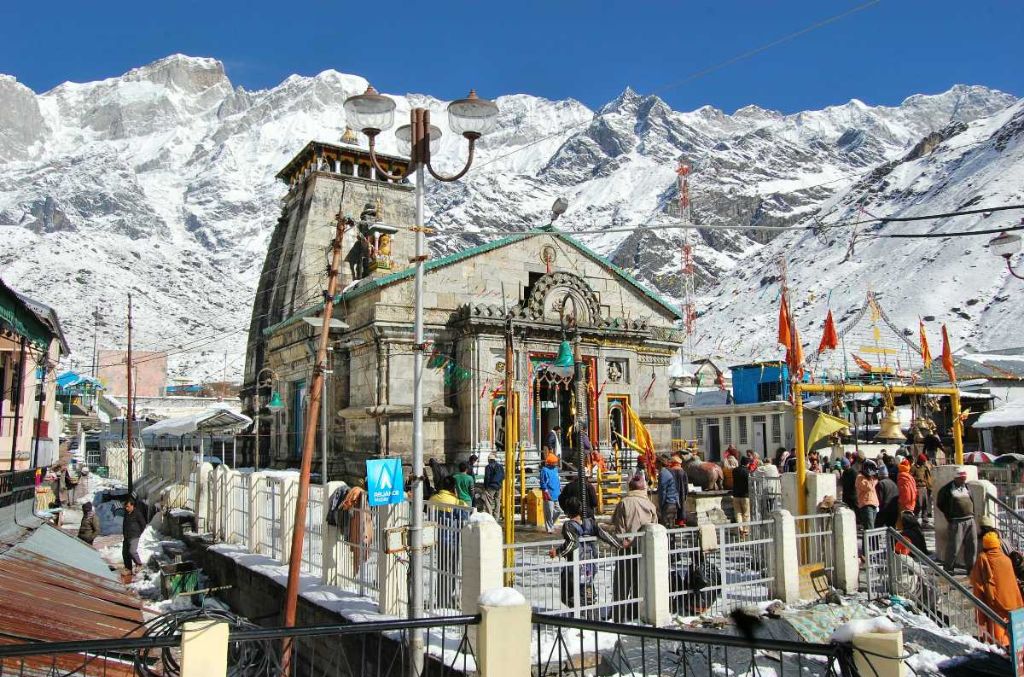
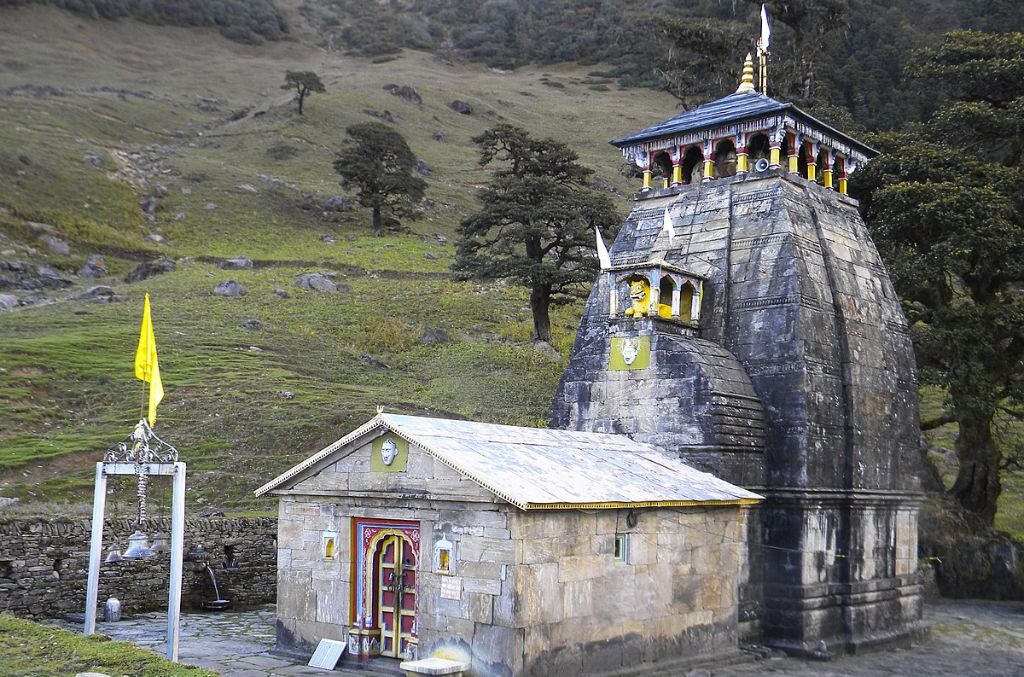
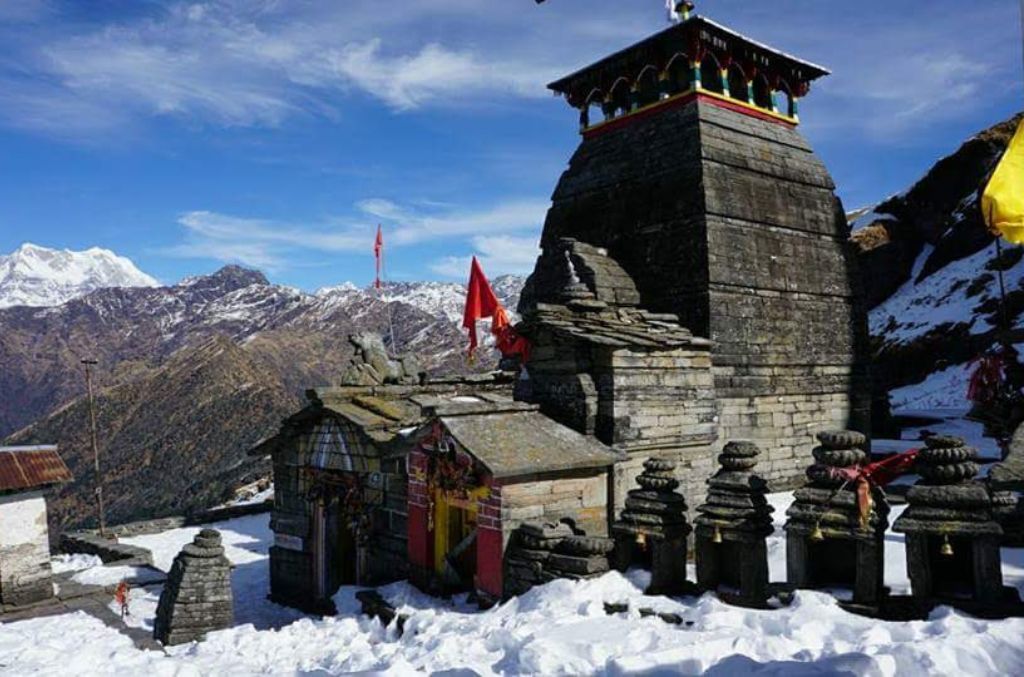
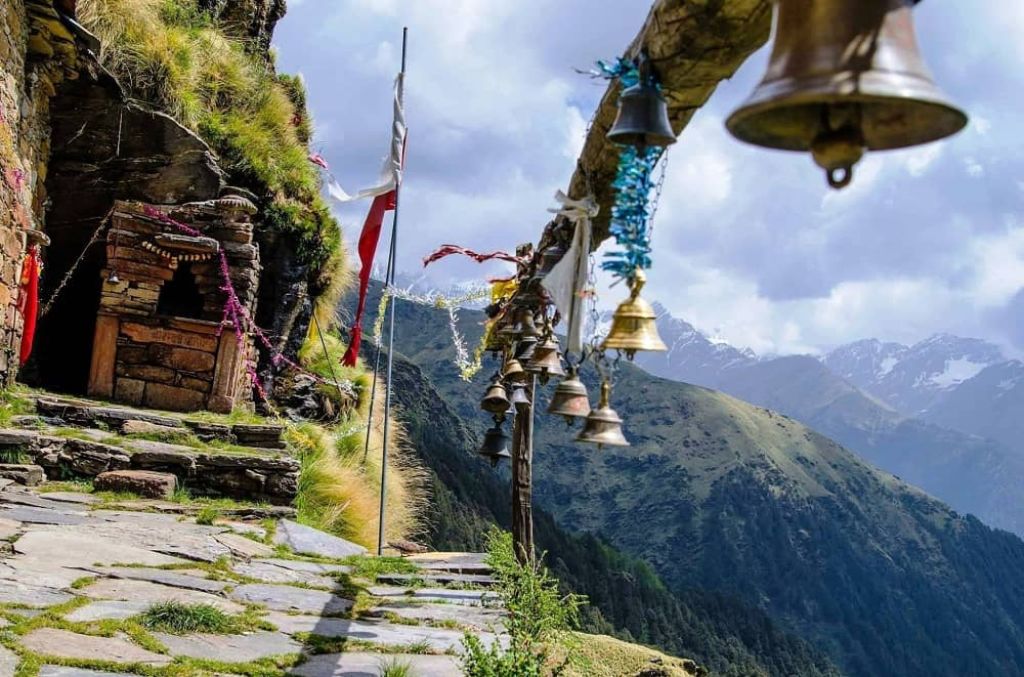
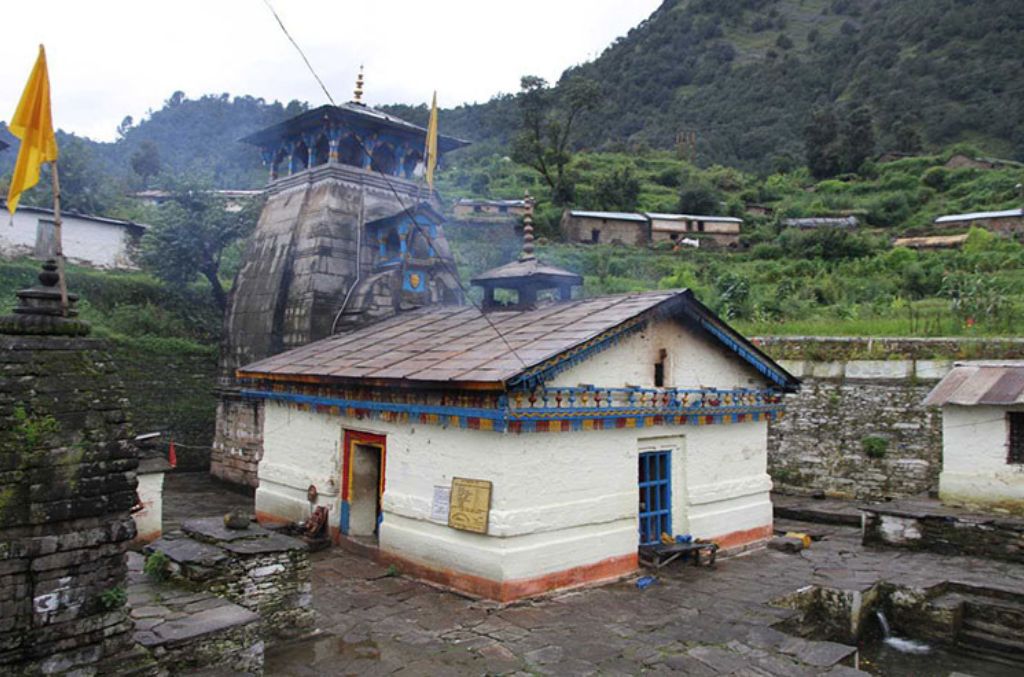
Policies
- We will confirm your booking within 24 hours.
- In case of non-availability for the date, our team will get in touch with you to work out best possible dates. Kindly bear with us as this industry does not work with real-time inventory view from vendor partners.
- If you wish to cancel before receiving a confirmation, you will receive 100% refund.
- Full Refund- If cancelled before 7 days of scheduled departure.
- No Refund- If cancelled within 7 days of scheduled departure.
- If participants are unable to or refuse to go through with the experience at site, no refund will be applicable.
- 100% at the time of booking
- Rescheduling is subject to availability.
- Once the cancellation window ends, rescheduling cannot be done.
- Each booking allows for a maximum of two rescheduling opportunities. After which, no further changes can be made to the booking.
- Any price differences resulting from rescheduling, such as changes in seasonal rates or availability, will be applicable and will be communicated to the customer during the rescheduling process.
- In the event that a customer requests a rescheduling but fails to attend the newly scheduled appointment, it will be considered a missed appointment, and our standard cancellation policy will apply.
FAQ
- The Five Kedars: A Spiritual Journey in the Heart of the Himalayas The Five Kedars, also known as the Panch Kedar, are a group of five sacred Hindu temples dedicated to Lord Shiva, located in the Garhwal region of Uttarakhand, India. These temples hold immense religious significance and are an important part of Hindu mythology. Here's a closer look at each of these revered shrines:
- Kedarnath Temple Kedarnath is the most prominent of the Panch Kedar temples, situated at an altitude of 3,583 meters (11,755 feet) near the Mandakini River. It is believed to be the site where the hump of Lord Shiva appeared. The temple is accessible through a 16 km trek from Gaurikund and is surrounded by majestic snow-capped peaks, offering a serene and spiritual experience.
- Tungnath Temple Tungnath is the highest Shiva temple in the world, perched at an elevation of 3,680 meters (12,073 feet). Located in the Tungnath mountain range, this temple marks the spot where Lord Shiva's arms are believed to have emerged. The trek to Tungnath starts from Chopta and is relatively short but steep, making it a favorite among adventure enthusiasts and pilgrims alike.
- Rudranath Temple Rudranath Temple is situated at an altitude of 2,286 meters (7,500 feet) amidst dense forests and alpine meadows. This temple is dedicated to the face of Lord Shiva. The journey to Rudranath involves a challenging trek through scenic landscapes and offers a tranquil environment for meditation and worship.
- Madhyamaheshwar Temple Located at an elevation of 3,497 meters (11,473 feet), Madhyamaheshwar Temple is where the navel of Lord Shiva is believed to have appeared. The trek to this temple is both beautiful and arduous, taking devotees through picturesque valleys and lush green forests. The temple's remote location adds to its spiritual ambiance, attracting those seeking solitude and divine blessings.
- Kalpeshwar Temple Kalpeshwar is the only Panch Kedar temple that remains open throughout the year. It is situated at an altitude of 2,200 meters (7,217 feet) in the picturesque Urgam Valley. The temple is unique as it enshrines the matted hair (jata) of Lord Shiva. The trek to Kalpeshwar is relatively easier compared to the other Kedars, making it accessible for a wider range of pilgrims.
- The Toughest Trek in Panch Kedar: Rudranath Temple
- Rudranath Temple trek is considered the toughest among the Panch Kedar. Situated at an altitude of 2,286 meters (7,500 feet), the journey involves a strenuous trek through dense forests, rugged terrains, and steep ascents. The challenging path, spanning approximately 20 kilometers from the nearest village, demands physical endurance and determination. Despite the difficulty, the trek rewards pilgrims with breathtaking views and a deeply spiritual experience, making it a revered destination for those seeking both adventure and divine blessings.
- To complete the Panch Kedar pilgrimage, start at Kedarnath, accessible via a 16 km trek from Gaurikund. Next, trek to Tungnath from Chopta, followed by the journey to Rudranath through Sagar village. Continue to Madhyamaheshwar from Uniana, and finally, reach Kalpeshwar from Helang. Plan the pilgrimage from May to October for favorable weather. Ensure physical fitness, carry essential trekking gear, and stay hydrated. Completing Panch Kedar offers a spiritually rewarding and adventurous experience amidst the majestic Himalayas.
- The Highest Kedar: Tungnath Temple
- Tungnath Temple is the highest Kedar among the Panch Kedar temples, perched at an elevation of 3,680 meters (12,073 feet) in the Tungnath mountain range of Uttarakhand, India. This sacred shrine, dedicated to Lord Shiva, offers breathtaking views and a serene atmosphere. Accessible via a 4 km trek from Chopta, Tungnath is renowned for its spiritual significance and stunning natural beauty. Pilgrims and trekkers alike visit Tungnath to experience its divine presence and panoramic Himalayan vistas.
